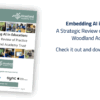
Welcome to Day Fourteen of the 2020 Appvent Calendar!
Today’s entry on the calendar, nominated and written about below by Tim Evans, Edtech Coordinator at the Stamford American School in Hong Kong, is a firm favourite for me. I won’t steal any of Tim’s thunder, but it gets a huge thumbs up; a previous entry on the Periodic Table of ARVR Apps – today’s entry is Google Arts and Culture available on both Android and iOS and in a browser.
After two weeks of amazing app-shares to date – today I would like to share Google Arts & Culture with you. This is an app I have been using for quite some time, and an app that I feel will be taken to another level over the next 12 months. With Google shelving Expeditions and Tour Creator this July, with both platforms being merged into Google Arts & Culture, now might be an opportune time to start exploring, but first what is Google Art & Culture?

Google Arts & Culture is both a website and an iOS or Android app that provides free access to art, culture, and historical collections from around the world. It allows users to explore specific museums’ collections or themes, and to filter by movement, artist, historical event, historical figure, medium, and more. Some resources can also be browsed by geographic location on a map, by dominant colour, or in a timeline, allowing students to easily compare works from the same time period. There’s plenty here to explore with your class, from Impressionism to Civil Rights to fossils.
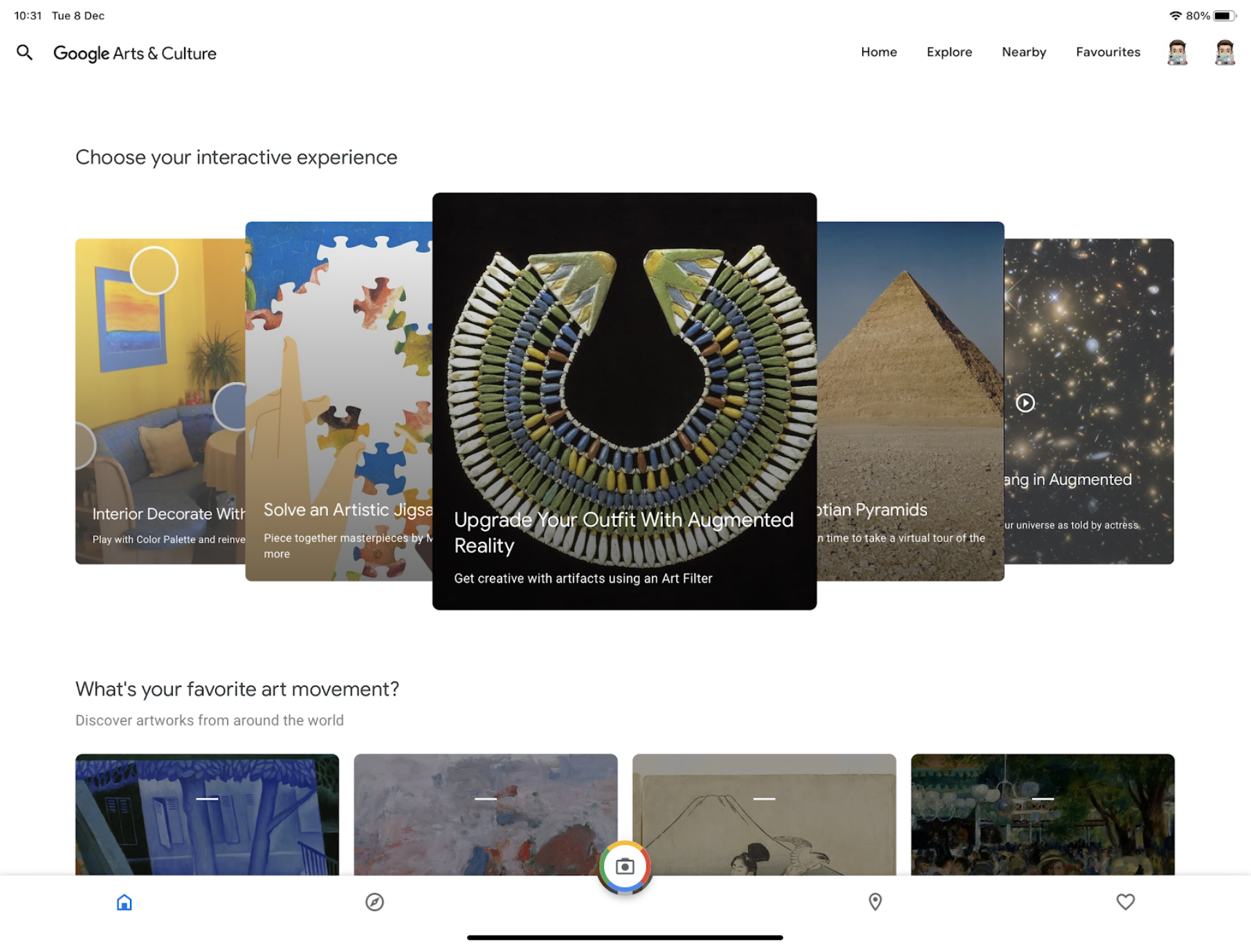
In addition to more conventional museum holdings, the site includes the ability to tour famous sites and landmarks and visit outdoor art installations, as well as non-art locations, such as CERN.
Users can also visit many works inside the museums using Google’s Street View. Some items include the ‘Explore Connections’ option, which is almost like a two-dimensional stream of consciousness array, linking images by criteria such as location, material, style, time period and more!
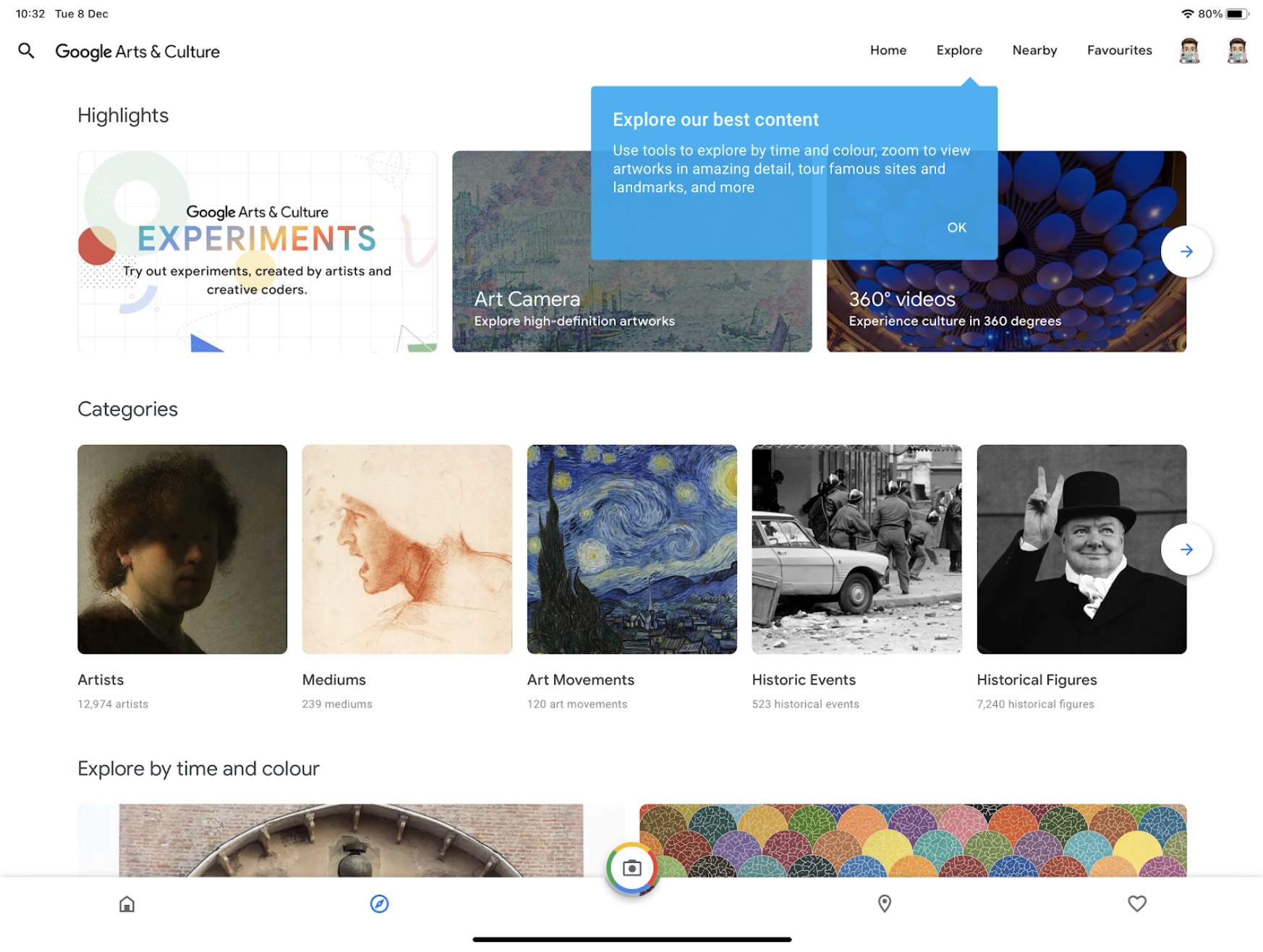
The site includes the latest news related to museums, collections, and events as well as nearby places to visit in person (with media of their collections). There are layers upon layers of resources; from visual media of artefacts to virtual tours to “stories,” which provide written context to a series of artefacts.
When students dig into a historical event, for instance, they’ll find curated stories, images, artefacts, and timelines from a wide range of collections. The site also includes links to interactive experiments that demonstrate the interplay between technology, art, and science. Beyond just exploring, users can “favourite” any of the resources on the site and easily access them all from the Favourites page. In addition, they can create different galleries of their favourited resources — based on any theme they like — and share those with others, which could align with a specific classroom activity or assignment.
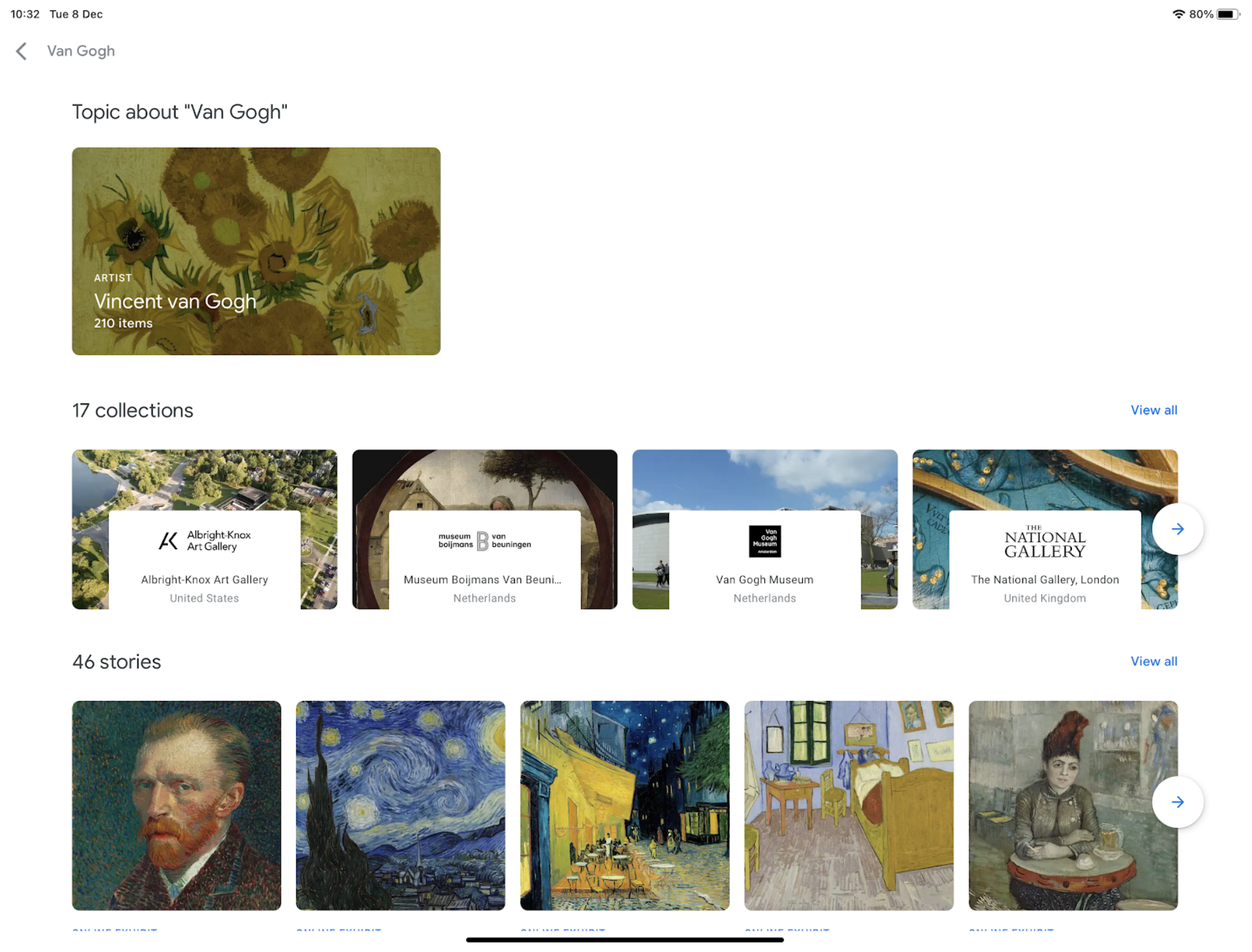
There’s no doubt that incorporating more art and culture into the classroom (check this recent research paper which links learning motivation to arts and culture) is good for learning.
Google Arts & Culture makes this easier, providing teachers and students with an incredible collection of resources that will enhance any lesson, activity, or assignment. The curated collections readily offer connections to your existing curriculum and could also inspire new lessons or units.
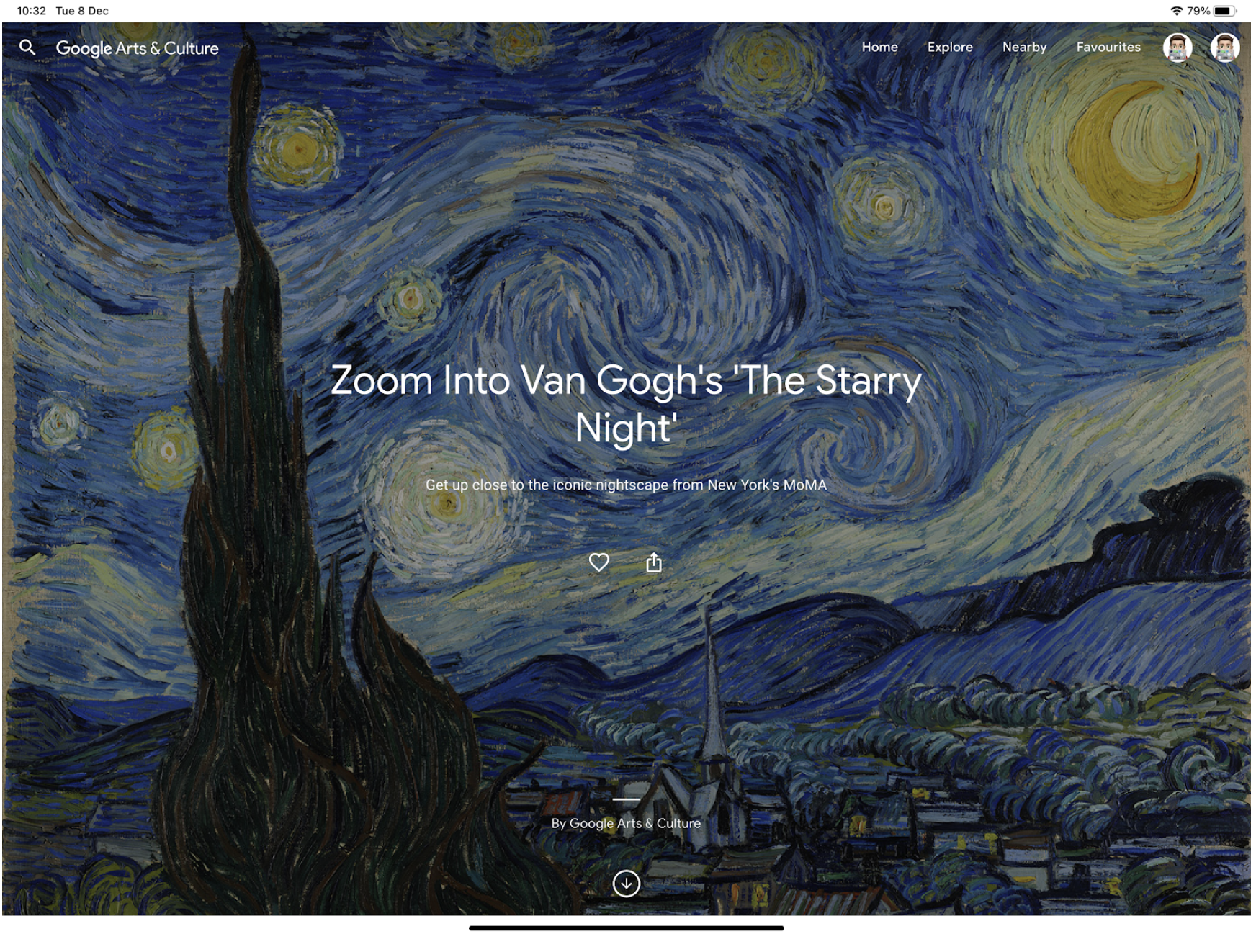
In terms of learning, there are a few standout offerings. The virtual tours of museums and sites, videos, experiments, and artefacts are of particular interest for students. The ‘Favourites feature’ can allow teachers to share curated media with students or enable students to create their own galleries to demonstrate knowledge or provide visuals for assignments. 2020 has seen us hold off on field trips, so the museum-based browsing can offer a fair approximation, especially those museums with the Street View option.
Why Google Arts and Culture?
In this post, I have tried to share some insights into the tool itself, but you might be asking why have I chosen this for my contribution to AppVent Calendar 2020 when there are so many other brilliant tools and resources available to educators?
 As has been the case for all of us, the past 12 months have been challenging on so many levels; both personally and professionally.
As has been the case for all of us, the past 12 months have been challenging on so many levels; both personally and professionally.
We’ve seen Black Lives Matter come to the forefront of daily discussions, we’ve witnessed elections disputed, and then there’s also the small matter of a global pandemic – which has changed the world as we know it.
With all of this in mind, I feel now that it is more important than ever for us to explore and learn about cultures, history, and arts from all around the globe, and there is no better platform to facilitate this than Google Arts & Culture.
A platform that is easily accessible, available on most devices and a platform that is becoming easier and easier to use, with each version released.
2021, a decade after its launch, is going to be the biggest year to date for this platform with the integration on Expeditions driving this.
I’ve always been a fan of field trips, visits to museums and art galleries. These excursions being some of the highlights of an academic year. Whilst things have changed with us being unlikely to be able to visit these places for the foreseeable future, I’m pleased at least that with this particular tool, the important work of sharing cultures, art, history and more with our learners, will continue to be something which enriches both our curriculum, our students learning opportunities and ultimately, our lives.
Today’s app was nominated and written about by Edtech Coordinator at the Stamford American School in Hong Kong, ADE, MIEExpert, GoogleET, Tim Evans. You can follow Tim on Twitter here.










